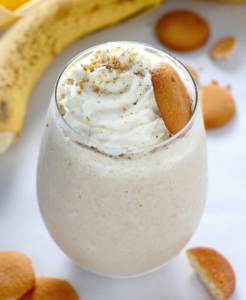“Paleo,” short for paleolithic, also called “primal,” “real food,” or a number of other names is a way of eating that I actually strongly support. There are few ‘diet trends’ that I agree with, but this is one that I highly regard and that’s because it’s actually quite simple: mimic our ancestors, who suffered from fewer chronic diseases than in modern times. There is something to be said for eating actual butter, preparing dinner from scratch and eating real sugar when baking. Of course times are different now than 100 years ago, but we can still incorporate old practices into our modern day lives.
This is what it comes down to: eating whole foods, knowing where your food comes from when possible, and avoiding processed, refined, nutrient-poor foods. This also means avoiding grains, legumes, refined sugars, and pasteurized dairy. When you take time to think about this, you are simply eliminating foods that really don’t promote health in your body.
Although there are foods “to eat” and foods “not to eat” when following this way of eating; paleo still supports individuality and allows room for adjusting based on who you are. Some of us may need more fruits, while others may require more fish. This is a framework for which to build solid nutrition, promoting ultimate health.
Basic Principles:
1. Eat whole foods.
When you eat food as provided by nature, it actually promotes health, healing, and immunity against future illness and ailments.
2. Avoid modern, processed and refined foods.
This list includes grains, pasteurized dairy, industrial seed oils (corn, cottonseed, soybean, canola, or rapeseed), and artificial or refined sugar and sweeteners (high fructose corn syrup). Not only do refined, processed foods not offer us the health benefits of whole foods, but instead feed our bodies with bioengineered substances that create an array of problems for our bodies. These problems may not effect us immediately, but they rear their ugly heads in some form or another at some point in our lives: ranging from weight gain, diabetes, digestive issues, skin issues, hormone imbalance, etc. I love this saying: “If its from a plant eat it, and if its made in a plant don’t.”
3. Eat to maintain proper digestive function.
Everyones digestive function varies, but the importance of proper functioning does not. Some people can tolerate dairy, or grain-based foods, others cannot, and its up to us to determine what works. The ability to fight chronic, and even acute, disease states begin in the gut. 60-80% of the immune system is in the gut! There is immune tissue that follows the entire length of your small intestine. If your body suffers from digestive irritation, you set the stage for a suppressed immune system in other areas. This may result in seasonal allergies or something like diverticulitis, psoriasis, or any number of inflammatory and autoimmune conditions.
4. Eat to maintain proper blood sugar regulation.
Another key component to health! The amount of time it takes before your hunger strikes in again after a meal and how you feel entering into your next meal are critical signs of how well your blood sugar levels are managed. If you’re hungry every two hours and feeling shaky, weak, or starving entering into each meal/snack, you are probably not consuming a balanced diet for you. Figuring out how much protein, fat and ‘good’ carbohydrate you should eat will help you immensely in maintaining well-balanced blood sugar throughout the day.
5. Follow a plan tailored to YOU and YOUR Goals.
Paleo is about eating healthy – whole foods, and avoiding unhealthy – processed, refined, junk food. That being said, we are all unique in what we need to be as healthy and happy as possible. What did your ancestors eat? What did you grow up eating? What foods do you gravitate toward? What is your blood type? What is your health history? Who you are, where you live, what your lifestyle is constituted by all contributes to what foods may work best for you.
Before I tackle the list of foods incorporated in the paleo lifestyle I will say this, all grains don’t have to be “bad, disease-promoting” grains. If you make your grains from scratch so all the nutrients are preserved, then by all means eat them! As I always encourage: individuality is imperative and there is always room for tweaking. No one way for everyone. Maybe cheese is your thing, so consume high-quality cheese – organic, perhaps unpasteurized and local. Know your sources. If you crave chocolate, eat some phenomenal, mouth-watering, irresistible dark chocolate. Most importantly pay attention to what feels good for you and enjoy your food.
EAT WHOLE FOODS:
– Meat, seafood and eggs
Ideally from grass-fed, pasture-raised, organic-fed animals or wild-caught, sustainable seafood sources.
– Vegetables and fruits
Go to town on veggies (except for potato, corn and squash which are very starchy)! Eat most all fruits, those these can be harsh on blood sugar so limit fruit intake.
– Nuts and seeds
Great snack item, but these can be overdone.
– Fats and oils
Choose the best quality fats and use for cooking or simply to add healthy fats into a meal.
ELIMINATE REFINED FOODS:
– Refined grains
This includes, but is not limited to: cereals, oatmeal, toast, muffins, scones, croissants, sandwich bread, tortillas, pancakes, waffles, pasta, rice, pita, bagels etc.
– Whole grains
This includes, but is not limited to: wheat, barley, rye, spelt, corn, rice, quinoa, millet, bulgar wheat, buckwheat, and amaranth.
– Packaged snacks
Granola bars, breakfast bars, protein bars, toaster pastries, crackers, cookies, chips, baked goods, and this list goes on and on.
– Dairy Products
Eliminate processed and pasteurized milk, cheese, yogurt, cottage cheese, ice cream, frozen yogurt, etc. Raw dairy is debatable, I”m okay with it.
– Certain beverages
Drink water. Do not drink anything sweetened, especially with artificial sweeteners. This includes juices, soda, diet soda, energy drinks, sweetened tea, shakes or smoothies. *Juicing with pure veggies/ some fruit can certainly be beneficial, depending on quantity and quality. Minimize coffee, tea and alcohol intake.
Paleo Sources –
Practical Paleo by Diane Sanfilippo, BS, NC
Paleo for Women by Stephanie Ruper
The Paleo Solution by Robb Wolf
“We live in a time when up is down and black is white. We have been taught to believe that foods coming out of factories are safer and healthier than foods your great-grandmother ate.” – Diane Sanfilippo


